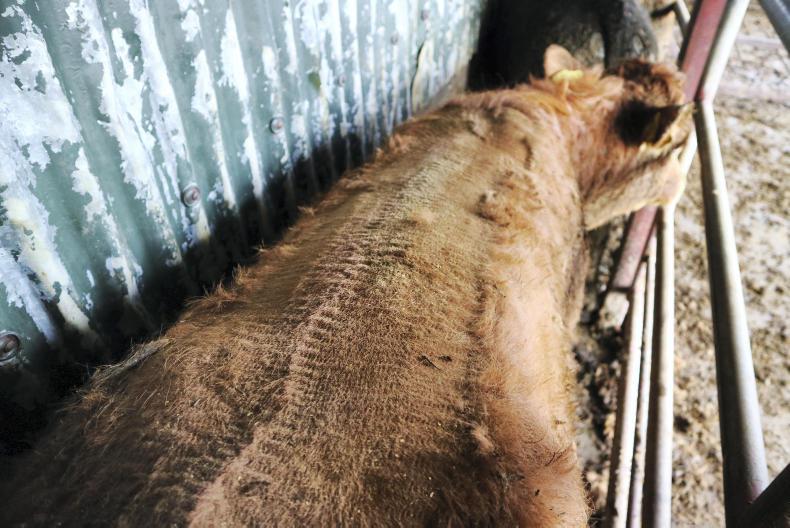After setting up the blades it is important to remember to set the tension on the clippers correctly. This is done by setting the tension screw that is situated on top of the clipper head. The finer the hair that you are clipping the more tension you want. To increase tension you turn the screw clockwise and for less tension, turn the screw anti-clockwise. You will very quickly find the right setting for the tension for clipping cattle. Before you start, and at regular intervals throughout clipping it is important to oil the head of the clippers, generally after every two or three animals. This helps to ensure the blades remain sharp and produce a clean finish.
Clipping should ideally be carried out as cattle are being housed to keep stress levels to a minimum. Good handling facilities are essential to ensure cattle are properly secured. The idea is to remove as much hair from the back as possible. As lice tend to congregate on the top of the back, the removal of the hair helps to reduce the lice population.
The more hair that can be removed from an animal’s back the better. The aim should be to clip three to four inches either side of the spine, from the front shoulder to the tail head. This will help to reduce the animals’ sweating when housed.
It is advised that all cattle in the shed receive lice treatment on the same day, however a follow up treatment may be needed if the product used does not kill lice eggs. With the backs shaved it allows the products to have direct access with the skin which is also beneficial. Combining clipping and a pour-on will give you the best chance of controlling any potential parasite issues over the winter months.
Running the clippers against the grain will ensure that you get a tighter cut on the back of the animal, however, be careful going against the grain as it increases the risk of cutting the animal. Many people describe clipping the backs of cattle as opening the zip on a jacket which will let out the heat and cool you down. Cattle will lose heat through their back so the clipping is intended to help speed up this process. Research has shown that warmer cattle will have a reduced intake of dry matter. By clipping an animals back and allowing heat to escape, the aim in to increase intake.Having cattle dry will make clipping much easier to carry out. For this reason if cattle are housed while wet it may be advisable to wait a day to allow them to completely dry off. Clipping the backs of cattle will help reduce sweating. This in turn can help keep the animal cleaner.
It is also advised to trim the tails of cattle. This will help to keep the cattle cleaner as they will not be able to flick dirt over their coat. For autumn-calving cows it may also help to keep dirt off the udder, reducing the incidences of mastitis.


Before and after
Hair on the length of the tail must also be clipped against the grain if you want to get a clean finish, this is more severe on the clippers than trimming backs. For the end of the tail it is advised to go with the grain. Blades of the clippers should be sharpened regularly as this will both improve efficiency of clipping and the finish. Hold the end of the tail and clip up the length of the tail. Once you have the main trunk clipped place the tail on the back of the animal and clip the end of the tail.
Accidents will happen with a clippers so it is advisable to always have some Alamycin spray close to hand. If you do cut an animal while clipping, cover the entire wound with the spray to prevent an infection occurring.






 This is a subscriber-only article
This is a subscriber-only article
















SHARING OPTIONS: